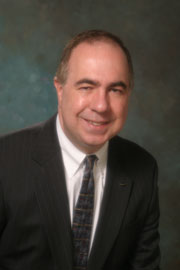 |
→ July 2005 Contents → Column
|
Tech Tips
|
 |
|
Welcome to this month's edition of Tech Tips. Before we move on, let me remind you that you are invited to submit questions about photo equipment, imaging technology, or photo industry trends that may have a bearing on your work or interests. I cannot promise to answer everything, but I pledge to do my best to address the issues that concern you. (You can contact me through the e-mail link provided at the end of this article.)
Here are this month's questions:
Q: I had many problems with servo AF on EOS-1Ds and it took ages for anyone in U.K. to accept there were issues. Now using EOS-1Ds Mark II and 1D Mark II, [they] seem much better at focus tracking. Have the EOS-1Ds focus tracking problems been eliminated in these models and what should I set them to in personal settings to achieve the best/fastest servo AF? Are they as fast/accurate as the EOS-1v was? U.K.-based car photographer.
A: Each EOS-1-class digital SLR has its own predictive AF algorithms, but I think it's fair to say that both of the Mark II cameras are at least as good as the EOS-1v, and much better than the original EOS-1Ds in that area. The 1D Mark II is Canon's best, but the 1Ds Mark II is also excellent, as I discovered when I was testing it last year at the American Le Mans auto race event. The most significant limitation is the 4 fps maximum framing rate of the 1Ds Mark II vs. 8.5 fps for the 1D Mark II. That's important for race cars, but less so for many other moving subjects. For tips on camera settings and custom functions to achieve optimum results according to the type of photography you do, be sure to check out the following document:
http://photoworkshop.com/canon/EOS_Digital.pdf
Q: Is it true that all digital images should go through a sharpening procedure and that we should not expect them to be sharp coming from the camera? If so, what is your recommendation for a basic sharpening setting? Will the sharpening issue improve with future digital cameras? Thanks for your response.
A: Sharpening is important for almost all digital images, but it's important to recognize that optimum sharpening levels can and do vary, based on output size, viewing distance and printing methods, not to mention personal taste. There are dozens of sharpening methods, ranging from in-camera settings to post-processing techniques.
Digital SLRs vary significantly in terms of range and default settings for in-camera sharpening. (Keep in mind that in-camera sharpness settings do not apply to RAW files because they can be overridden during conversion. Therefore, the following recommendations apply mostly to in-camera JPEGs.) Photographers who wish to reduce the need for post-processing of in-camera JPEGs should explore the use of higher in-camera sharpness settings. However, it's usually best to reduce or shut off in-camera sharpening if you plan to apply it during post-processing. As a rough guideline, we usually recommend Unsharp Mask settings of 300%, 0.3 pixel radius and 0 pixel threshold for letter-size prints from EOS Digital SLR images, but please feel free to vary these settings according to your needs and/or personal taste.
For maximum flexibility, it's a good idea to save an unsharpened version of each image file so that you're always working from a "clean slate" so to speak, should there ever be a need or desire to apply a different sharpening technique at a later date or for another application. (RAW files are ideal for this purpose.) Remember that sharpening an image is like using permanent ink: it's easy to apply, but difficult if not impossible to remove.
Q: I need some help with a question that my in-laws laid on me at dinner last night: Which digital P&S has minimal/no appreciable shutter lag? My sister-in-law currently has a compact digital camera but complains of the shutter lag and its inability to record the activities of a toddler, something with which you may have some sympathy.
A: I'd love to be able to tell you that there's a point-and-shoot digital camera that has eliminated the shutter lag issue, but to the best of my knowledge, it doesn't exist yet. With most compact digitals, shutter button response can be drastically improved by pressing halfway until focus locks, then pressing the rest of the way to shoot. But this technique requires practice, and some people just don't get it. Flash recycling time is another potential problem: Most compact cameras are set for automatic flash in low light by default, and they usually take at least 3 to 5 seconds to charge up. This can be problematic when you are trying to shoot spontaneously.
The best solution for most amateur photographers who are sensitive to these issues is a digital SLR, but it doesn't have to be a full-blown professional model. Affordable DSLR cameras from manufacturers like Canon, Nikon, Pentax, Olympus and Konica-Minolta fit the bill. They are usually small and light compared to pro models, sometimes weighing less than 1.5 lb. complete with the standard zoom lens, battery and memory card. They can be set for fully automatic operation (most have manual overrides, too), and they have no noticeable shutter lag. Picture quality is typically better than P&S digitals, especially at high ISOs, and plenty of optional lenses, flash units and other accessories are available. Best of all, most current entry-level DSLRs cost less than $1,000, which puts them within financial reach of many photo enthusiasts.
Thanks for reading Tech Tips! That's it for now. See you in August!
© Chuck Westfall
|
|
Back to July 2005 Contents
|
|